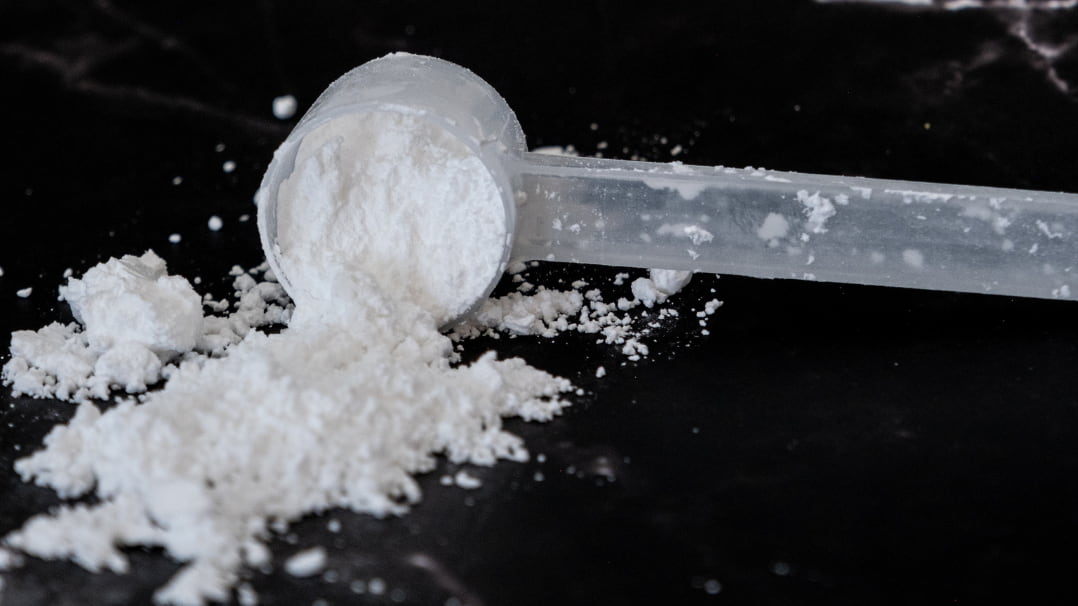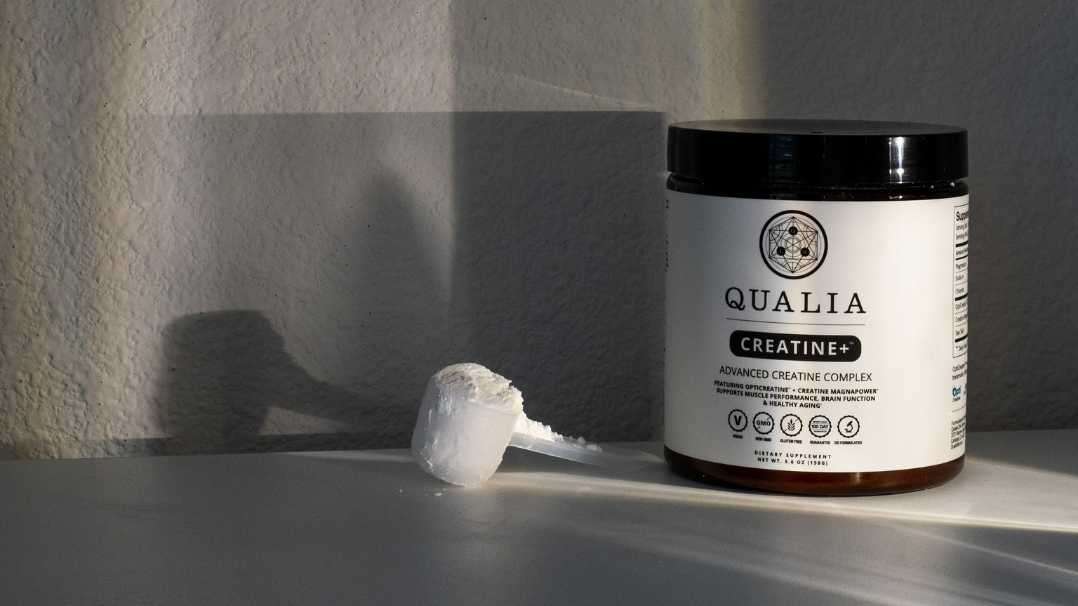Soy is a staple in many diets around the world and soy-rich diets have been linked to healthy aging and general well-being [1–4]. The health benefits of soy have been extensively studied and there is evidence that soy supports several aspects of human health [5]. Yet, despite these known benefits, many people have concerns regarding soy. This article explores the science behind soy, addresses common concerns, and highlights its evidence-based health benefits.
What Are Soy Isoflavones?
Soy is a nutritious food rich in high-quality protein that supplies all the essential amino acids your body needs, along with healthy fats, fiber, and many important vitamins and minerals [5]. Soy is also rich in beneficial plant compounds such as polyphenols, particularly in a type of polyphenols called isoflavones.
A key characteristic of isoflavones is that they have a similar structure to that of estrogen, which allows them to bind to estrogen receptors (ERs). As a consequence, isoflavones can mimic some of the functions of estrogen in the body. Because of this capacity, they are often referred to as phytoestrogens (“phyto” means plant) [5,6].
But although they’re similar in structure, soy isoflavones and estrogen differ in many ways, and research suggests that each has unique effects on the human body. For example, isoflavones bind to ERs much more weakly than estrogen and bind preferentially to one type of estrogen receptor, ERβ, while estrogen binds to both ERα and ERβ equally. Because these receptors have different tissue distributions and effects, isoflavones may not act on all the same tissues and have the same effects as estrogen [5].*
Furthermore, phytoestrogens may either activate or block ERs, depending on the types of cells. Scientific evidence suggests that phytoestrogens may have a balancing effect on estrogen signaling—depending on the tissues and on the circulating estrogen levels, they may exert an estrogenic or antiestrogenic action [7,8]. This balancing effect means that soy isoflavones may be more accurately thought of as helping support estrogen signaling homeostasis.*
Common Concerns Regarding Soy Isoflavones
Postmenopausal Women’s Health
A specific concern related to isoflavones is whether their estrogenic properties may be detrimental to certain groups, particularly postmenopausal women. This concern was addressed by the European Food Safety Authority (EFSA), which carried out a systematic review to investigate whether an association could be found between long-term intake of isoflavones from food supplements and harmful effects on the mammary gland, uterus, and thyroid in peri- and post-menopausal women. EFSA concluded that isoflavones from food supplements, which typically provide a daily dose of 35–150 mg/day, did not adversely affect the three organs that were investigated [9].*
Testosterone in Men
Another common concern regarding soy isoflavones is whether they may impact testosterone levels in men or have feminizing effects due to their estrogenic properties.
This concern may have originated in a couple of case reports published a few years ago describing feminizing effects in two men (including an increase in the amount of breast gland tissue, higher estrogen, lower testosterone, erectile dysfunction, and decreased libido) presumably occurring as a result of soy food consumption [10,11]. However, both men were found to consume massive amounts of soy products—one of them drank 3 quarts of soy milk per day, while the other had an estimated daily intake of soy isoflavones (360 mg) manyfold above the average intake in Japan (25-50 mg). After adjusting their diets, their hormonal levels and physical changes returned to normal [10].*
Research does not support those concerns. A critical examination of the clinical evidence concluded that isoflavone exposure in the form of supplements (as much as 150 mg/day isoflavones) or soy foods does not have feminizing effects on men [12]. Similarly, a systematic review and meta-analysis of clinical studies found no effects of soy protein or isoflavone supplements on testosterone, sex hormone-binding globulin, free testosterone, or the free androgen index [13].*
However, the two case reports mentioned above are important to remind us that consuming excessive amounts of any food can potentially lead to health issues.
Thyroid function
In vitro and animal studies have suggested that some isoflavones, such as genistein, may reduce thyroid gland function, but evidence from human studies suggests that isoflavones do not adversely affect thyroid function in healthy individuals with adequate levels of iodine [14–17].*
The different effects between in vitro/animal research and human studies can be explained by several factors: 1) in vitro conditions do not replicate the complexity of living organisms; 2) research animals (most often rodents) have different physiologies to humans, so not all findings in animal research apply to humans; 3) in vitro and animal studies often use these compounds isolated and in very different amounts to those taken by humans in their diet or those used in human studies.
Obviously, studies in animals and in vitro are very useful to understand how a compound may influence health, but ultimately, its effects in humans can only be understood with studies in humans—only these will give you the verdict of whether or not a compound is beneficial.*
Benefits of Soy Isoflavones
The Japanese diet, which is regarded as one of the world’s healthiest diets [18,19], is rich in soy-based products, particularly fermented soy products such as soy sauce, natto (fermented soybeans), and miso (fermented soybean paste), which are consumed consistently. The average daily intake of soy isoflavones in the Japanese diet is 25-50 mg, whereas in the USA and Europe, the average intake is less than 3 mg [20].
Soy isoflavones are believed to promote many of the health benefits attributed to soy. Soy isoflavones have been shown to support endothelial function [21], healthy glucose metabolism [22], a healthy gut microbiota composition [23–26], skin health appearance [27–29], and even cognitive function [30–32].* In menopausal women, they have been shown to help in menopausal support [33,34] and to support bone health [35,36].*
Furthermore, soy isoflavones support the management of senescent cells [37–40], which may contribute to supporting healthy aging—that’s the reason why we included them in Qualia Senolytic.*
Soy Isoflafones in Qualia Senolytic
The Soybean Seed Extract used in Qualia Senolytic contains soy isoflavones. As is the case with most dietary compounds, the amount at which they are consumed can make the difference between being beneficial or not. The recommended serving of Qualia Senolytic supplies 80 mg of soy isoflavones from soybean seed extract. The amount of soy isoflavones in a 2-day dose of Qualia Senolytic (160 mg) would be similar to the amount consumed over about 1 week in a diet where fermented soy products are consumed consistently. This is also within the serving used in human studies of soy isoflavones where they are taken daily.
*These statements have not been evaluated by the Food and Drug Administration. This product is not intended to diagnose, treat, cure, or prevent any disease.
References
[1]Z. Yan, X. Zhang, C. Li, S. Jiao, W. Dong, Eur. J. Prev. Cardiol. 24 (2017) 735–747.
[2]S.M. Nachvak, S. Moradi, J. Anjom-Shoae, J. Rahmani, M. Nasiri, V. Maleki, O. Sadeghi, J. Acad. Nutr. Diet. 119 (2019) 1483–1500.e17.
[3]S. Blanco Mejia, M. Messina, S.S. Li, E. Viguiliouk, L. Chiavaroli, T.A. Khan, K. Srichaikul, A. Mirrahimi, J.L. Sievenpiper, P. Kris-Etherton, D.J.A. Jenkins, J. Nutr. 149 (2019) 968–981.
[4]D.D. Ramdath, E.M.T. Padhi, S. Sarfaraz, S. Renwick, A.M. Duncan, Nutrients 9 (2017) 324.
[5]M. Messina, Nutrients 8 (2016) 754.
[6]M.-C. Canivenc-Lavier, C. Bennetau-Pelissero, Nutrients 15 (2023) 317.
[7]S. Bedell, M. Nachtigall, F. Naftolin, J. Steroid Biochem. Mol. Biol. 139 (2014) 225–236.
[8]I.M.C.M. Rietjens, J. Louisse, K. Beekmann, Br. J. Pharmacol. 174 (2017) 1263–1280.
[9]EFSA Panel on Food Additives and Nutrient Sources added to Food (ANS), EFSA J. 13 (2015) 4246.
[10]J. Martinez, J.E. Lewi, Endocr. Pract. 14 (2008) 415–418.
[11]T. Siepmann, J. Roofeh, F.W. Kiefer, D.G. Edelson, Nutrition 27 (2011) 859–862.
[12]M. Messina, Fertil. Steril. 93 (2010) 2095–2104.
[13]J.M. Hamilton-Reeves, G. Vazquez, S.J. Duval, W.R. Phipps, M.S. Kurzer, M.J. Messina, Fertil. Steril. 94 (2010) 997–1007.
[14]H. Marini, F. Polito, E.B. Adamo, A. Bitto, F. Squadrito, S. Benvenga, Front. Endocrinol. (Lausanne) 3 (2012) 94.
[15]T. Sathyapalan, A.J. Dawson, A.S. Rigby, N.J. Thatcher, E.S. Kilpatrick, S.L. Atkin, Front. Endocrinol. (Lausanne) 9 (2018) 531.
[16]M. Messina, G. Redmond, Thyroid 16 (2006) 249–258.
[17]J. Otun, A. Sahebkar, L. Östlundh, S.L. Atkin, T. Sathyapalan, Sci. Rep. 9 (2019) 3964.
[18]E. Vitale, Endocr. Metab. Immune Disord. Drug Targets 24 (2024) 1711–1720.
[19]E. Damigou, R.I. Kosti, S.M. Downs, N. Naumovski, D. Panagiotakos, Endocr. Metab. Immune Disord. Drug Targets 24 (2024) 1746–1755.
[20]G. Rizzo, L. Baroni, Nutrients 10 (2018).
[21]D.P. Beavers, K.M. Beavers, M. Miller, J. Stamey, M.J. Messina, Nutr. Metab. Cardiovasc. Dis. 22 (2012) 182–191.
[22]K. Fang, H. Dong, D. Wang, J. Gong, W. Huang, F. Lu, Mol. Nutr. Food Res. 60 (2016) 1602–1614.
[23]C. Iino, T. Shimoyama, K. Iino, Y. Yokoyama, D. Chinda, H. Sakuraba, S. Fukuda, S. Nakaji, Nutrients 11 (2019).
[24]C.H. Nakatsu, A. Armstrong, A.P. Clavijo, B.R. Martin, S. Barnes, C.M. Weaver, PLoS One 9 (2014) e108924.
[25]P. López, M. Sánchez, C. Perez-Cruz, L.A. Velázquez-Villegas, T. Syeda, M. Aguilar-López, A.K. Rocha-Viggiano, M. Del Carmen Silva-Lucero, I. Torre-Villalvazo, L.G. Noriega, N. Torres, A.R. Tovar, Mol. Nutr. Food Res. 62 (2018) e1800313.
[26]G. Huang, J. Xu, D.E. Lefever, T.C. Glenn, T. Nagy, T.L. Guo, Toxicol. Appl. Pharmacol. 332 (2017) 138–148.
[27]T. Izumi, M. Saito, A. Obata, M. Arii, H. Yamaguchi, A. Matsuyama, J. Nutr. Sci. Vitaminol. 53 (2007) 57–62.
[28]S.-Y. Kim, S.-J. Kim, J.-Y. Lee, W.-G. Kim, W.-S. Park, Y.-C. Sim, S.-J. Lee, J. Am. Coll. Nutr. 23 (2004) 157–162.
[29]A. Oyama, T. Ueno, S. Uchiyama, T. Aihara, A. Miyake, S. Kondo, K. Matsunaga, Menopause 19 (2012) 202–210.
[30]A.A. Thorp, N. Sinn, J.D. Buckley, A.M. Coates, P.R.C. Howe, Br. J. Nutr. 102 (2009) 1348–1354.
[31]C.E. Gleason, C.M. Carlsson, J.H. Barnet, S.A. Meade, K.D.R. Setchell, C.S. Atwood, S.C. Johnson, M.L. Ries, S. Asthana, Age Ageing 38 (2009) 86–93.
[32]S.E. File, D.E. Hartley, S. Elsabagh, R. Duffy, H. Wiseman, Menopause 12 (2005) 193–201.
[33]K. Taku, M.K. Melby, F. Kronenberg, M.S. Kurzer, M. Messina, Menopause 19 (2012) 776–790.
[34]M. Ahsan, A.K. Mallick, J. Clin. Diagn. Res. 11 (2017) FC13–FC16.
[35]T. Sathyapalan, M. Aye, A.S. Rigby, W.D. Fraser, N.J. Thatcher, E.S. Kilpatrick, S.L. Atkin, J. Bone Miner. Res. 32 (2017) 157–164.
[36]K. Taku, M.K. Melby, M.S. Kurzer, S. Mizuno, S. Watanabe, Y. Ishimi, Bone 47 (2010) 413–423.
[37]D. Kusumoto, T. Seki, H. Sawada, A. Kunitomi, T. Katsuki, M. Kimura, S. Ito, J. Komuro, H. Hashimoto, K. Fukuda, S. Yuasa, Nat. Commun. 12 (2021) 257.
[38]H. Zhang, X. Pang, H. Yu, H. Zhou, J. Biochem. Mol. Toxicol. 36 (2022) e22939.
[39]G. Wu, S. Li, G. Qu, J. Hua, J. Zong, X. Li, F. Xu, Pharm. Biol. 59 (2021) 1388–1401.
[40]K.Y. Lee, J.-R. Kim, H.C. Choi, Vascul. Pharmacol. 81 (2016) 75–82.







No Comments Yet
Sign in or Register to Comment